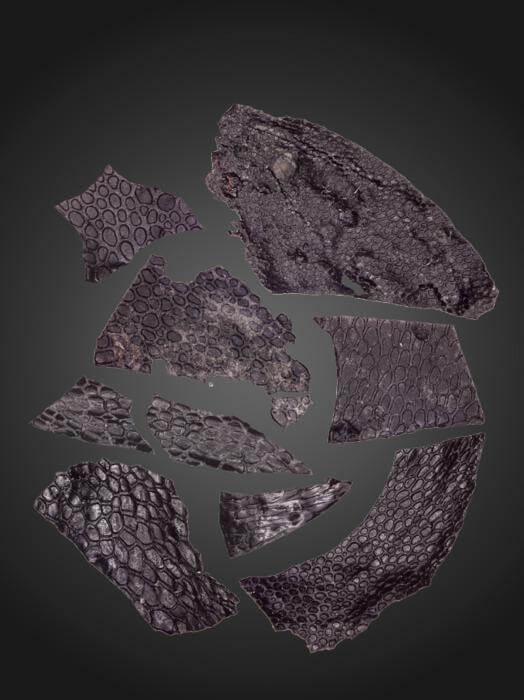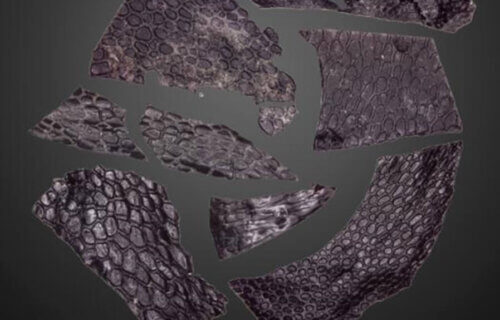TORONTO, Ontario — Researchers have unearthed the oldest known 3D fragment of fossilized skin, which is at least 21 million years older than any previously discovered samples. Collected from a cave system in Oklahoma, this skin fossil belonged to an early species of Paleozoic reptile which shared characteristics with both ancient and present-day animals.
Its pebbled surface closely resembles crocodile skin, while the hinged regions between its scales show a likeness to the skin structures found in snakes and worm lizards. This fossil represents the oldest example of preserved epidermis – the outermost layer of skin – in terrestrial reptiles, birds, and mammals.
Ethan Mooney, the study’s lead author and a paleontology graduate student at the University of Toronto, points out that the resemblance of this fossilized skin to that of modern reptiles underscores the significance of these structures in species survival.
“The epidermis was a critical feature for vertebrate survival on land,” says Mooney in a media release. “It’s a crucial barrier between the internal body processes and the harsh outer environment.”

Due to the minuscule size of the skin fossil – smaller than a fingernail – co-author Tea Maho, also from the University of Toronto, employed microscopic examination to study its epidermal tissues.
This method enabled the scientists to conclude that the fossil likely originated from the skin of amniotes – the group of terrestrial vertebrates that includes reptiles, birds, and mammals, and which evolved from amphibian ancestors during the Carboniferous Period.
Although the team has not yet determined the exact species of the animal or the specific region of the body from which the skin came, they believe that the structure of this skin may have played a pivotal role in the eventual evolution of bird feathers and mammalian hair follicles.
“We were totally shocked by what we saw because it’s completely unlike anything we would have expected,” says Mooney. “Finding such an old skin fossil is an exceptional opportunity to peer into the past and see what the skin of some of these earliest animals may have looked like.”
“Every now and then we get an exceptional opportunity to glimpse back into deep time,” adds Mooney, who worked on the project as an undergraduate with paleontologist Robert Reisz at the University of Toronto. “These types of discoveries can really enrich our understanding and perception of these pioneering animals.”

It is uncommon for skin and other soft tissues to fossilize. However, the researchers believe that preservation in this case was possible due to the location of the fossil’s discovery.
The skin fossil was unearthed in Richards Spur, a cave system in Oklahoma, which features fine clay sediments and likely an oxygen-depleted environment. These features would have contributed to slowing down the decomposition process.
“Animals would have fallen into this cave system during the early Permian and been buried in very fine clay sediments that delayed the decay process,” Mooney concludes.
“But the kicker is that this cave system was also an active oil seepage site during the Permian, and interactions between hydrocarbons in petroleum and tar are likely what allowed this skin to be preserved.”
You might also be interested in:
- Largest fossilized flower preserved in amber could be nearly 40 million years-old!
- Ötzi the Iceman had dark skin and was bald — New study rewrites ancient history
- Extinct reptile fossil reveals the prehistoric origins of human teeth
South West News Service writer Imogen Howse contributed to this report.

Once again, studies that only reflect a hypothesis get construed as fact by those wishing to forward their own personal philosophical belief.
Here is the original study without the vegetarian spin. These societies were set up for survival purposes and their food consumption was based upon availability, not necessarily because it was considered scientifically healthy for them.
They ate animals products of beef, goat, sheep, and pig. The authors hypothesize that their consumption was up to 10% and the pulses made up the other, which again was based upon availability.
https://www.pnas.org/doi/10.1073/pnas.2312962120.